View of Yeovil from babylon Hill, 1839
View of Yeovil, 1839
From Babylon Hill
The hand-tinted stone lithograph, entitled 'View of Yeovil - from Babylon Hill' illustrated below, was by Henry Burn (1807-1884) who left for Australia in 1852. Burn's lithographs are known for their remarkable accuracy.
Henry Burn appears to have travelled the country creating accurate and detailed stone lithographs of scenes. He stayed in Yeovil for a very brief period during late 1838 and early 1839 and produced 'View of Yeovil - from Babylon Hill' and another lithograph depicting High Street, Yeovil, also dating to 1839, and entitled 'Market Place, Yeovil'. Both were published by William Porter and Henry Marsh Custard in January 1839 and printed by Charles Joseph Hullmandel (1789-1850) of London, where he maintained a lithographic establishment on Great Marlborough Street from about 1819 until his death. These are very early lithographs for Burn, as almost all of his other known works date from the 1840s onwards.
The lithograph looks down from the heights of Babylon Hill across to Yeovil nestled amongst the hills - Newton Hill (today's Summerhouse Hill) at the left, Penn Hill and Kingston Penn (today's Wyndham Hill) at the right.
The Gallery below shows the whole image, followed by enlargements of individual portions.
gallery
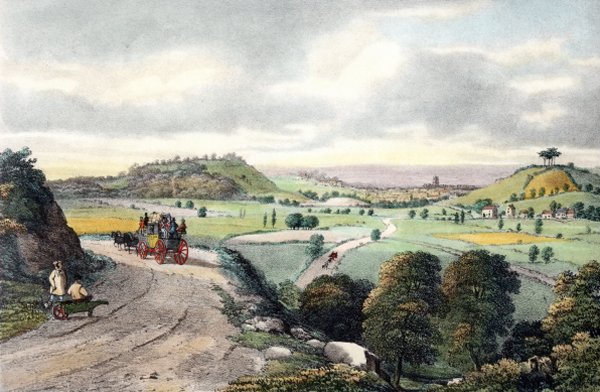
From my
collection
The entire image of the hand-tinted stone lithograph, published in January 1839.
The old London Road (today's A30) took a completely different route from Yeovil to Babylon Hill at this time. From Yeovil Bridge the road ran along what is today's Compton Road as far as the bend in the road by the houses before continuing east-southeast across today's fields. This direct assault on the hillside meant that the gradient was steep and at the top of the hill was an 'S'-curve.
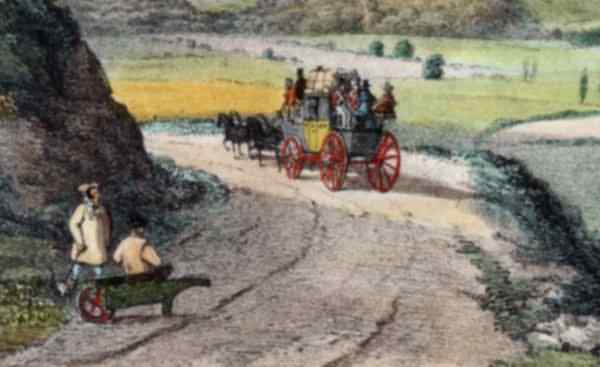
From my
collection
This section of the lithograph depicts a coach on the S-bend on the road at the top of Babylon Hill. This was a notorious black spot where many accidents occurred - however it was not realigned until the first half of the twentieth century.
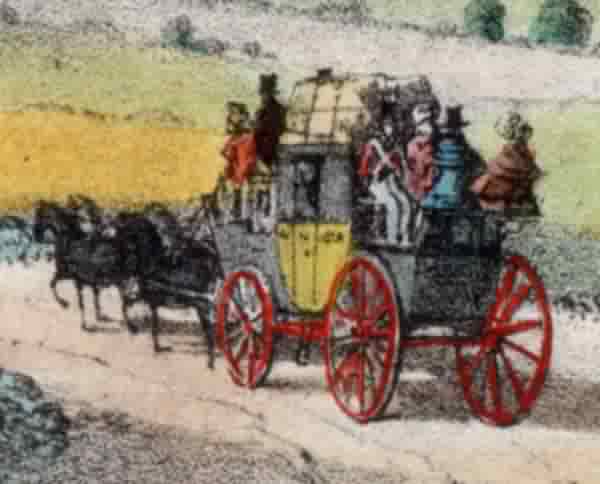
From my
collection
A detail of the coach with its passengers inside and out. It was cheaper to sit outside (in all weathers) and here are depicted two ladies, a gentleman and a soldier in uniform.
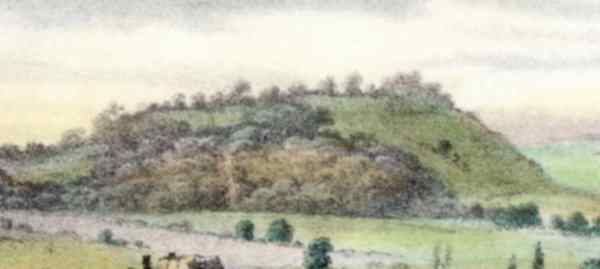
From my
collection
A detail of Newton Hill (today's Summerhouse Hill), which doesn't seem to have changed.
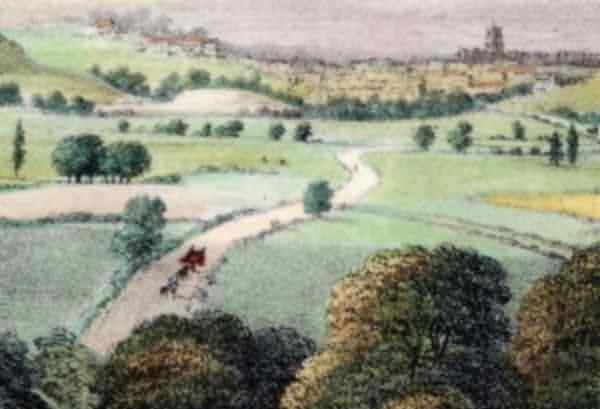
From my
collection
The London Road takes a different route from today's A30 by cutting across the fields in the direction of Pen Mill, before swerving off to the right and going off-picture around the northern slopes of Wyndham Hill as it does today. At top left is Penn Hill and to the right the tower of St John's church rises above the houses of Yeovil.
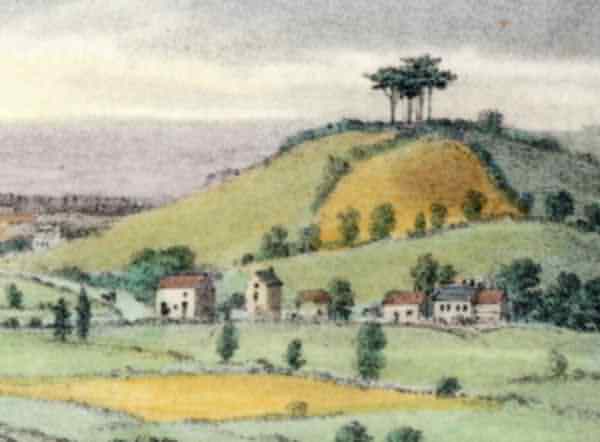
From my
collection
The buildings of Pen Mill nestle below Kingston Penn (today's Wyndham Hill), surmounted by its trees. The trees have been replanted more than once, the last time being in 1862 when 25 trees were planted to celebrate Queen Victoria's Silver Jubilee.
![]()
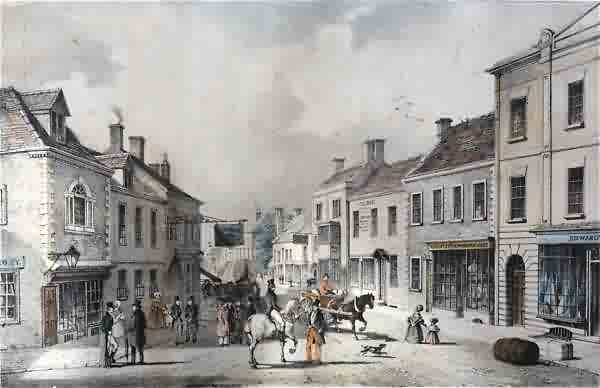
From my
collection
'Market Place, Yeovil' - the other known stone lithograph of Yeovil by Henry Burn, and again published by Porter & Custard in January 1839.